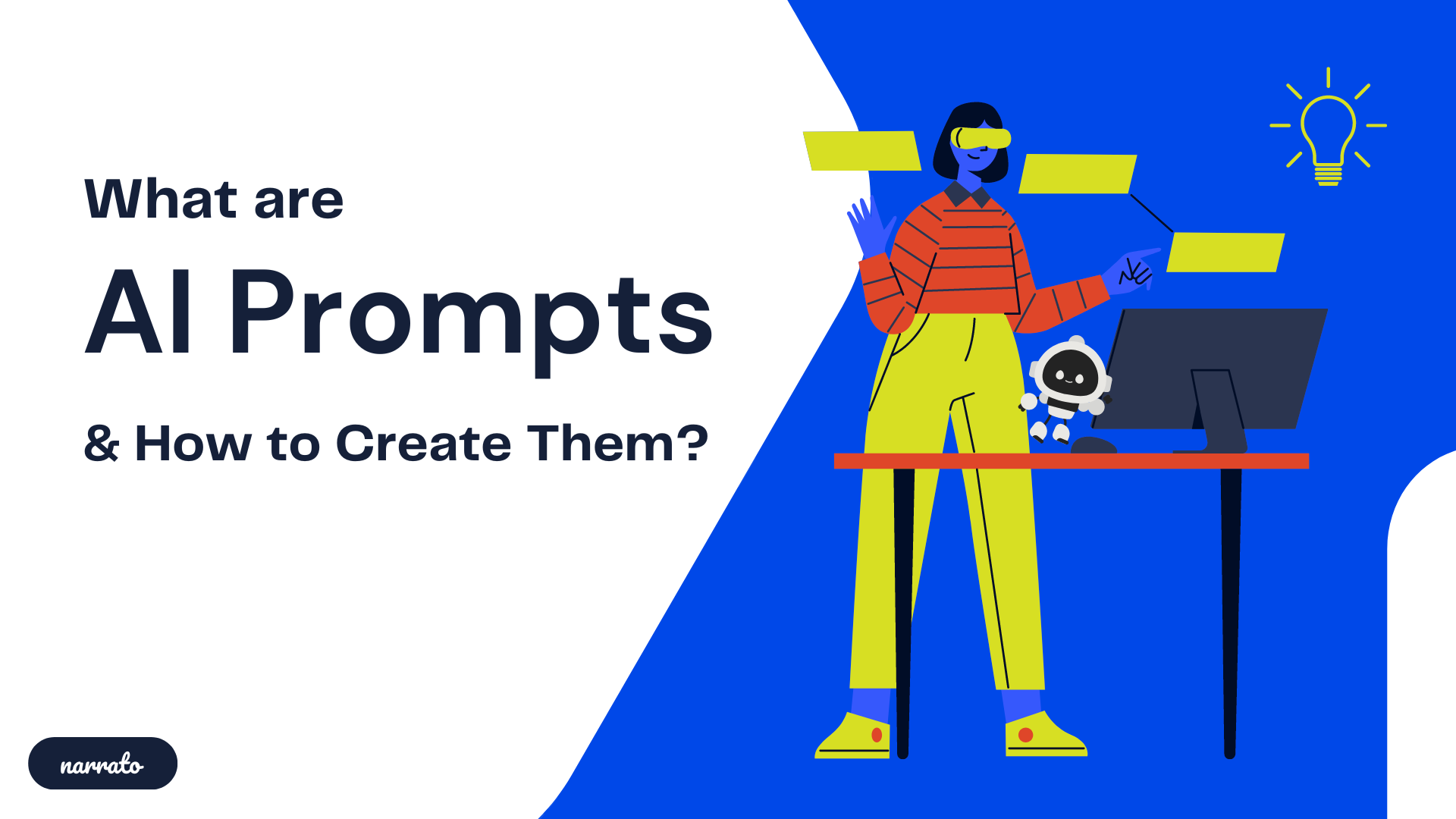Do you find yourself struggling with AI prompts while trying to get your chatbot or virtual assistant to deliver just the right response? It might seem straightforward at first—a bit of text or an instruction to guide the AI—but creating these prompts can get tricky. You need to be clear and precise for the AI to understand, yet open-ended enough to inspire creative replies. An easier way around it is using an AI writing assistant with pre-built AI templates as they don’t require any prompt engineering. But if you still want to know how to craft effective AI prompts, we’ve put together this great guide for you.
Let’s dive in and learn how AI prompts work and how you can create your own!
How to create effective AI prompts
Common mistakes to avoid when creating AI prompts
Some good examples of AI prompts

What are AI prompts?
AI prompts are short, instructive phrases or questions that guide AI models when generating text, images, or other forms of content. These prompts help the AI understand what kind of information you’re seeking or what task you want it to perform. Whether it’s generating text for creative writing, answering questions, or assisting with research or analysis, the right AI prompts can guide the AI to deliver relevant and useful outputs. The more well-crafted the prompt, the more accurate and helpful the AI’s response will be.
On Narrato, there’s an AI Chat tool where you can input AI prompts to get assistance with your content creation and marketing tasks.
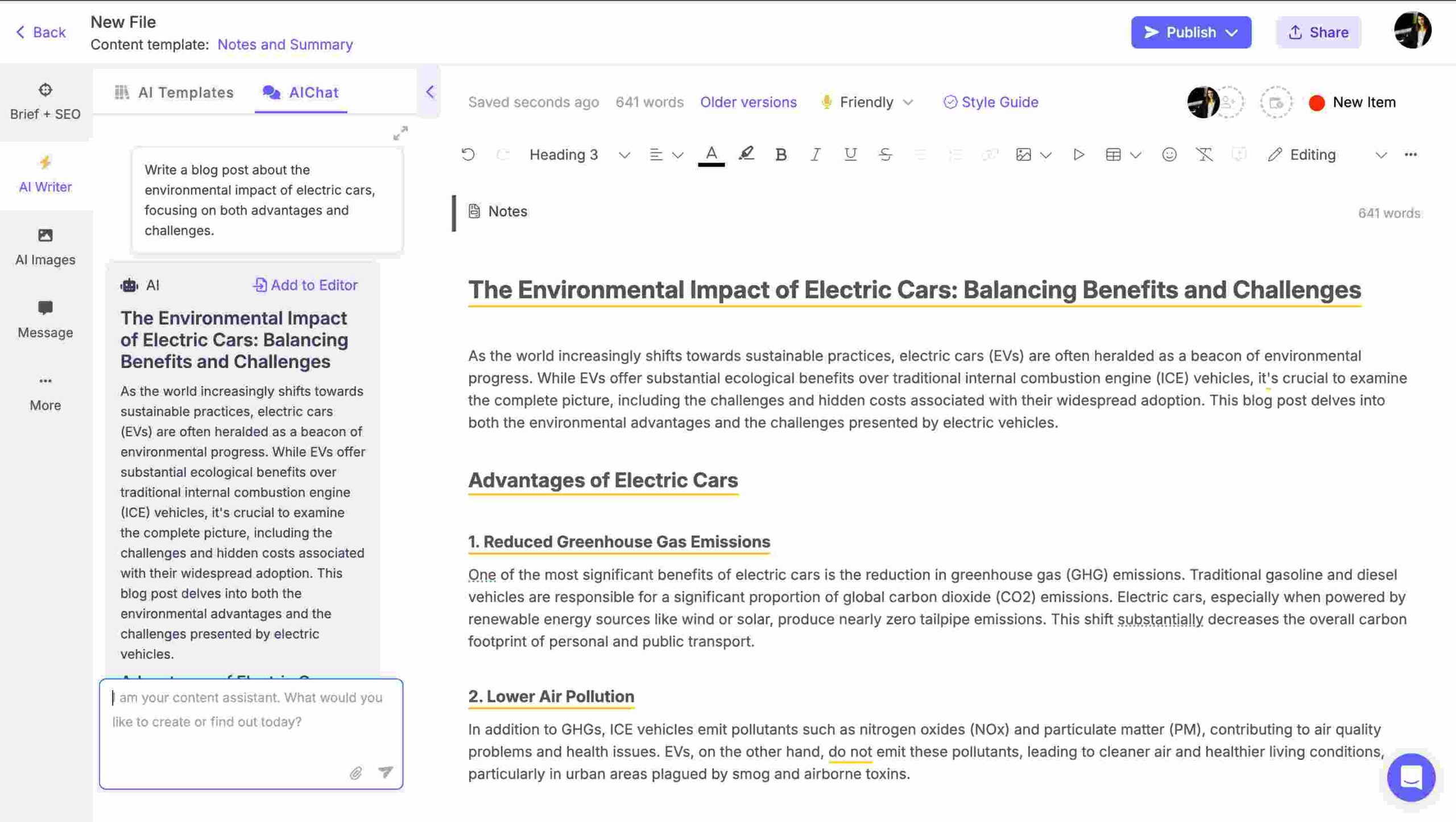
The platform also has an AI content assistant designed specifically for marketers, featuring over 100 AI content creation tools and templates. These tools and templates simplify the process of planning and creating high-quality, targeted content, without needing any AI prompts. All you need to input is some basic details like topic, keywords, etc. to generate content in a snap.
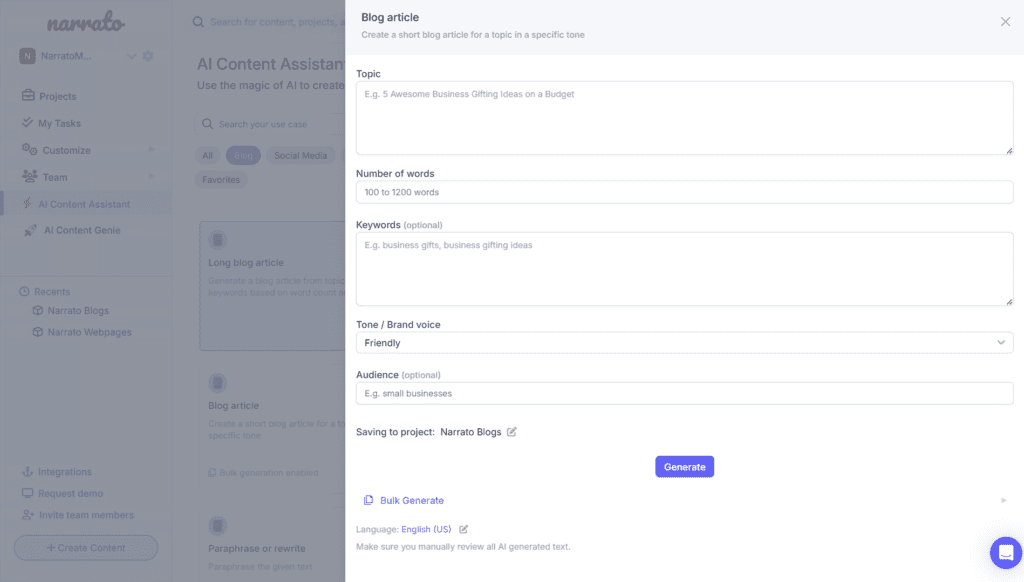
Different types of AI prompts
There are many different types of AI prompts you can provide to an AI tool –
- Completion AI Prompts: These AI prompts help finish a piece of text based on a given input. By understanding the context and tone of your initial text in your AI prompt, the AI provides creative extensions of the text.
- Creative AI Prompts: Creative AI prompts are perfect for art, fiction, and other imaginative concepts. These prompts can be open-ended or direction-oriented, like “Write a poem about the colors of an autumn forest,” or “Create an image of a futuristic city in space.”
- Reasoning AI Prompts: These AI prompts test the logical and analytical capabilities of AI. You might use them to solve problems, answer complex questions, or assist in decision-making processes.
- Comparison AI Prompts: For those times when you want to compare and contrast between any two items, comparison prompts come into play. You give the AI two or more items to compare, and it highlights similarities or differences. These AI prompts can help in generating analytical insights across a variety of topics.
- Informational AI Prompts: These prompts work a lot like using a search engine—they’re all about finding specific information or facts. Common AI prompts might involve product research, historical facts, trivia questions, or basic medical details.
- Summarization AI Prompts: These prompts tell the AI to condense longer pieces of text into shorter, digestible summaries. Perfect for those who need to get to the heart of a matter without wading through pages of data or text.
- Instructional AI Prompts: These prompts guide the AI in delivering step-by-step instructions or tutorials. You might use an instructional prompt like, “Write a step-by-step guide on how to bake a chocolate cake.” It’s incredibly handy for creating how-tos and procedural content.
- Translation AI Prompts: These AI prompts ask the AI to translate text from one language to another.
No matter which type of AI prompts you’re looking to create, it’s important to understand some fundamental principles of prompt engineering. That’s what we’re going to discuss next.
How to create effective AI prompts
Creating effective AI prompts is both an art and a science. Any AI prompt is made of three crucial elements –
- Action/Request: What do you want the AI to do?
- Context/Details: Any specific information the AI needs to know.
- Output/Format: How should the response be structured or formatted?
This forms the basic structure of your AI prompts. Now, if you want to get the most out of your AI tool, here are some more tips to guide you through this process of crafting your AI prompts –
1. Identify your goal for a task
When creating AI prompts, the first crucial step is to identify your goal for the task. Without a clear objective, your AI model might generate responses that are accurate but not necessarily aligned with your needs. Are you looking for help with creative writing, answer to specific questions, or extracting data from a text? Clearly defining the objective narrows down the possibilities and streamlines the AI’s functionality.
For instance, if you’re looking to build an FAQ section for your website, your goal might be to get quick and accurate responses to common queries. This guides the AI in understanding what information is most important and how it should deliver that information. So, jot down your primary goals, and keep them front and center.
2. Provide a straightforward instruction
Once you’ve decided on your goal, it’s time to provide clear instructions to the AI tools with your AI prompt. Be direct and unambiguous. Instead of saying, “Explain quantum physics,” be more specific: “Summarize the key principles of quantum physics in 200 words.” This avoids any guesswork, providing the AI with a well-defined path to follow.
It’s also important to avoid using overly complex language or unnecessary jargon, as this can confuse the AI and dilute your prompt’s effectiveness. A straightforward approach makes your intentions clear and helps you get the most accurate and useful responses. So, spell it out plainly and you’ll get results that hit the mark.
3. Give sufficient context
AI tools operate best when they have the right amount of context. Be sure to supplement your instructions with necessary background information. This additional context can guide the AI in understanding exactly what you need. For instance, you might explain who your target audience is, whether they are children, professionals, or hobbyists. You can also specify the desired tone and style of the output, such as formal, friendly, or technical. Remember, the more detail you provide, the more accurately the AI can assist you, resulting in outputs that hit closer to the mark every time.
4. Assign the AI a role to simplify things further
Assigning a role to your AI can help lend it more focus. For instance, if you need a recipe, tell the AI to act as a gourmet chef. This method helps the AI generate content that aligns with your expectations and provides more useful, context-specific information. By giving the AI a character to embody, you streamline the decision-making process it goes through, which often results in more on-point outputs.
5. Give examples or samples of desired output
When dealing with more complex tasks, showing the AI what you want can be incredibly helpful. By providing examples or samples of what you’re after, you give the AI a model to emulate. Specifying your requirements through examples can bridge the gap between your vision and the AI’s execution, ensuring that the final output meets your standards and preferences.

Common mistakes to avoid when creating AI prompts
Even with the best techniques in hand, it’s easy to make mistakes when crafting AI prompts. Let’s go over some common mistakes and how to avoid them.
- Being too vague or generic: A vague prompt can leave the AI without clear direction. General requests might result in generic responses. Aiming for more specificity about what you want will lead to better results.
- Overloading with information: While providing context is crucial, there is such a thing as too much information. Cramming a prompt with every imaginable detail can overwhelm the AI, much like it would overwhelm a human. It’s important to strike a balance. Include necessary context but keep it concise. Break down larger tasks into smaller, manageable prompts if needed.
- Assuming the AI understands context: AI lacks the intuitive understanding of context that humans possess. It processes information based on what it is explicitly told, so assumptions about shared knowledge can lead to errors. Always state any contexts you think are important rather than expecting the AI to fill in the blanks.
- Using figurative language: AI systems interpret language very literally. Using idiomatic or figurative language can confuse them and lead to unexpected results.
- Adding too many tasks in a single prompt: If you’re asking the AI to perform too many tasks at once, its focus might become muddled, and outputs could be less cohesive. It’s best to break complex requests into a chain of prompts.
Some good examples of AI prompts
Here are some examples of AI prompts to give you a better idea of how to leverage AI for different content marketing tasks –
1. AI prompts for brainstorming and research
AI can be an excellent tool for brainstorming and research by helping you generate fresh ideas or gather pertinent information related to your digital marketing products. Here are a few examples to help you get started –
- Share X creative content marketing strategies to captivate the interest of [specify target audience] when promoting [Specify product or service].
- Generate content ideas that highlight trends in [specify industry] and focus on [specify the content focus].
- Create a list of content ideas that would be perfect for [specify target audience] within the [specify your industry]. Make sure to consider the current challenges and any new trends in the industry.
- Develop a plan for a brand’s monthly content calendar in [industry]. Include topics centered around [specify the content focus].
- Can I have X ideas for blog topics for [specify industry or niche] on the theme of [specify theme], please?
- Create a detailed list of longtail keywords related to [topic].
- Please provide an LSI keyword list related to [specify target keyword].
- Which local SEO tips can businesses in [specify industry] use to draw in nearby customers?
- Could you give me a list of X unique topics related to [specify industry] that I can share on [specify which social media platform]?
- Could you share some thoughts on the best distribution channels to maximize the reach of our product? [Describe the product here.]
You can look at some more AI prompts for marketing research and brainstorming here.
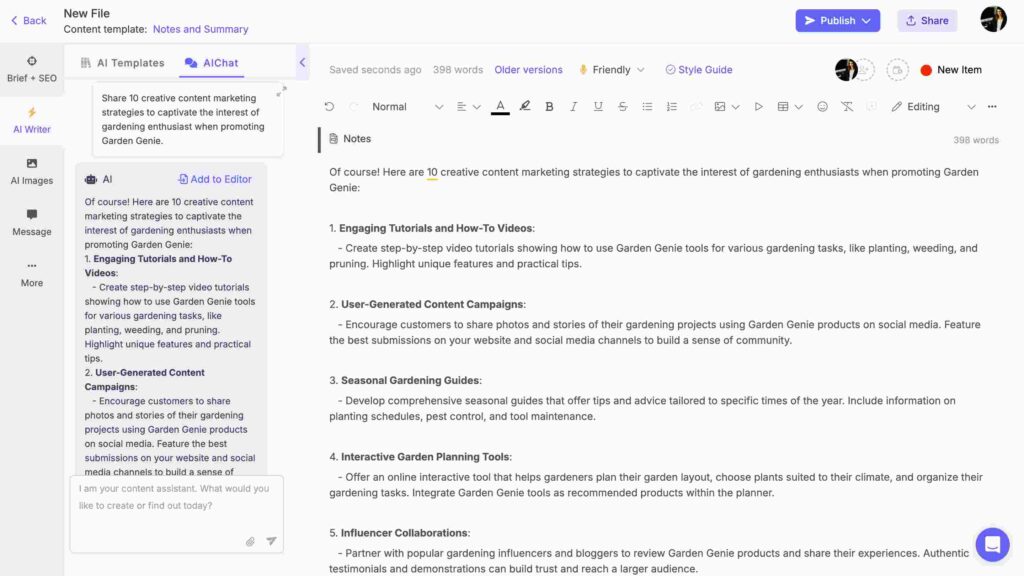
2. AI prompts for generating text
Here are some examples of AI prompts that highlight how versatile AI can be in generating varied and useful text tailored to specific needs –
- Create a comprehensive X-word guide on [topic], ensuring you cover [add the key points you want included] thoroughly.
- Create an in-depth article analyzing [topic], and include a discussion on the current state of [topic] and provide future forecasts.
- Create a step-by-step guide on [topic] and include practical advice at each step.
- Please write a comprehensive review of [specify product], making sure to cover [mention any angles to explore in the review].
- Create a product description showcasing the value [specify the product and give some details], and focuses on the benefits rather than just listing the features.
- Write a web copy in X words on [specify theme] that would engage [specify target audience], and inspire them to take [specify the desired action] on my website. Be sure to include the following details: [list details].
- Create an announcement focusing on [insert topic here], using exactly X words.
- Make a humorous and relatable social post about [topic] in 280 characters or less. Add emojis, hashtags, and mentions to engage your audience.
- I want to craft a captivating story centered on the theme of [specify theme] to inspire [target audience]. The narrative should emphasize the significance of [specify the main theme/subject matter]. Could you help me outline the main plot points for this story?
- As a skilled scriptwriter, your job is to come up with new ideas for a story that will connect with [target audience]. Think about different genres, characters, plot twists, and settings, and create an outline for each script. Make sure to include a brief summary for each idea, highlighting the main theme.
Here are some more AI prompts for writing better and faster.
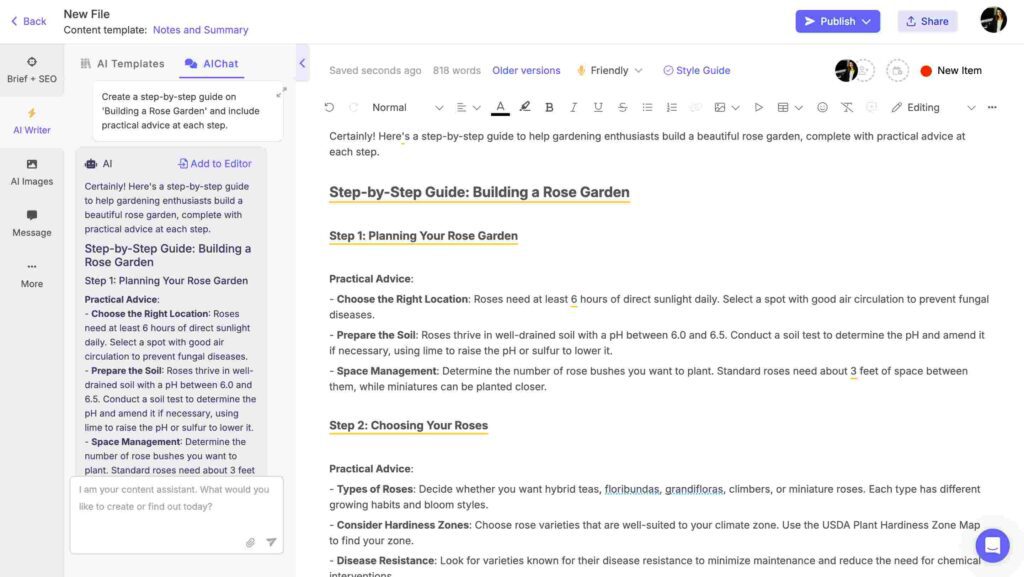
3. AI prompts for generating images
AI isn’t just for text – it can also create stunning visuals. Here are some AI image prompts to try:
- Create a product mockup for [specify the product] to help customers visualize the product before they decide to buy.
- Create a stunning graphic for a social post centered around the of [specify the theme of social post].
- Create an image for a [display ad/banner ad/video thumbnail] based on the theme of [specify the theme].
- Create an image in [specify image style] for a blog post on the topic [specify the topic].
- Design a custom image for a blog on [specify the topic]. Be sure to incorporate [list the specific elements you want to include in the image].
- Create a homepage image for a [specify the type of website], illustrating the [specify the message or concept you want conveyed].
- Could you create a high-quality image of [specify the product] for [product comparison article/product review article/any other article]? The image should highlight how the product [specify the benefit you want the image to showcase].
- Create an eye-catching hero image for a website’s homepage to highlight [specify product]. Make sure to incorporate vivid pictures of [input elements to include].
- Design a premium-quality logo in [specify the image style] for a [specify niche] brand, using a [specify the color theme] palette.
- Create a featured image for a newsletter about [topic], that includes [specify the elements].
Here are some more AI image prompts for marketing content and graphics for you to try on Narrato’s AI image generator.

Summing up
So there you have it, a primer on AI prompts and plenty of tips and ideas on how you can create them. AI prompts are the starting point for engaging with AI tools, whether it’s for creating art, writing, or any other creative venture. Understanding how to craft these prompts effectively can greatly enhance the quality of your results. Remember:
- Be specific to guide the AI clearly
- Keep it simple and concise for best results
- Provide sufficient context
If you want to make things easier, you can use Narrato’s AI writing templates to generate a variety of content, from blog posts, to social media posts, emails, and more.


